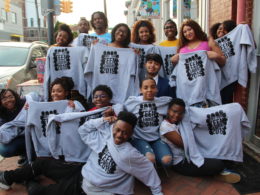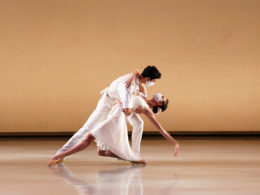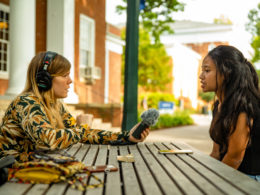We’re going to assume it was a very chilly night back in January 1807 at Stratford Hall, located alongside the Potomac River in Stratford, Va. And while that was the day Robert E. Lee’s story began, the story of his family’s home was already well underway.
But by the time the1820s rolled around, ownership changed hands and the plantation went into foreclosure. The land stayed under private ownership for about a century, but in the late 1920s, the Robert E. Lee Memorial Foundation purchased the property and set out to restore the buildings and gardens of the estate. The property, which occupies 2,000 acres long the Potomac and serves as a living museum, has since become an official historic landmark. And thanks to preservation and historic interpretation, the Lee family story and the hundreds of stories of the plantation’s enslaved community has been preserved.
One year after she celebrated her historic position as first woman president of the property, we spoke to Karen L. Day about her leadership and how the pandemic and the social justice movement have affected the operations of the organization.

Congratulations on being the first woman to lead Stratford Hall. You have a long history of working with historical and education institutions. What attracted you to the field, and what are you most excited about in your new role?
In some ways, I think I was destined for a career in museums. My schoolteacher mom and American history-buff dad dragged our family to places like Valley Forge and Colonial Williamsburg on vacation while our friends were off enjoying water parks and roller coasters. I fell in love with Virginia history while attending the College of William and Mary and developed a passion for engaging the public with museums in graduate school at George Washington University’s Museum Education Program.
Here at Stratford Hall, I’m excited about the wide variety of ways this iconic historic site can appeal to diverse communities. If you’re interested in early American history or architecture, we offer four different audio tours to guide visitors through the 1738 Great House. For budding naturalists, we provide walking trails through forests and along the Potomac River with an opportunity for bird watching and plant identification. Those with more STEM-focused interests might be drawn to our archaeological investigations or paleontology programs, which give visitors a chance to hunt for pre-historic fossils (think sharks’ teeth and whale vertebrae) on the beach. And our rich agricultural tradition continues today with a historic gristmill and demonstration fields.
While Stratford Hall was home to the Lees, there’s much more to the story. Could you tell us more?
The Lee family certainly remains at the core of our site’s history and mission. Home to the only two brothers to sign the Declaration of Independence (Richard Henry Lee and Francis Lightfoot Lee), Revolutionary War hero “Light Horse Harry” Lee, and birthplace of Robert E. Lee, Stratford Hall interprets the lives of these Lee men who played critical roles in the early history of our nation.
Our history also extends far beyond the noteworthy Lee family. Stratford Hall was home to enslaved people and indentured servants who built and sustained the Great House and plantation operation for generations. Enslaved cook Caesar, for example, likely made chocolate for the Lee family during the 1770s, using one of only three known chocolate stones to exist in colonial Virginia. Archaeological excavations reveal the rich Native American habitation of the site long before English colonial settlement, and paleontological specimens expose marine and land animals stretching back millions of years—like the 15-million-year-old baleen whale skull found in the Stratford cliffs back in 2013.
You were brought on right in the middle of the pandemic. What was that experience like, and how are you helping Stratford Hall “return to normal?”
Starting in a new role, located in a new community during a global pandemic, has certainly been challenging. Fortunately, our stakeholders had become acclimated to Zoom and other virtual platforms throughout the earlier days of the pandemic, so I was able to “meet” with board members, donors and community representatives. Everyone, including the dedicated staff team on site, graciously welcomed me and provided tremendous support during my first weeks “on the job.”
During the pandemic, the collections and programming team, led by Dr. Kelley Fanto Deetz, brilliantly pivoted to virtual offerings, introducing the historic site to thousands of visitors online—many of them far outside our geographic region. Historic foodways demonstrations, panel discussions and lectures—streamed live and recorded for visitors to access at their leisure—helped us not only survive the pandemic, but in fact grow our audience—inspiring us to plan hybrid offerings moving forward, even as we’re able to host in-person gatherings again.
As we welcome visitors back, we’re doing so with a variety of new and expanded offerings:
new educational offerings for children, all tied to Virginia state standards of learning;
a new exhibition in our Visitor Center featuring rarely displayed portraits, material cultural, manuscripts and archaeological artifacts; four distinct audio tour options for Great House visitors; and a recently updated East Garden featuring an authentic colonial period formal terrace design complete with vegetables like artichokes and squash, planted alongside clipped yew hedges and colorful perennials.
We’re also following COVID-19 safety precautions and staying abreast of current state and CDC guidance so that we can safely welcome back visitors for popular events like the Wine & Oyster Festival on Sept. 18-19 and Christmastide in December.
On the heels of the social justice movements last year, many institutions have reflected on their histories – some going as far as changing names or removing monuments and tributes. How has this impacted Stratford Hall?
We are hard at work examining both our legacy and our future as an organization founded as a memorial to Robert E. Lee at a time when our state and nation are grappling with the continued impacts of slavery and racial inequality.
In this area, Stratford Hall has had a long tradition of interpreting the vast colonial history of the plantation that stretches back decades before Robert E. Lee was born in 1807, including a focus on earlier generations of the Lee family and the enslaved community that lived and labored on the site for generations.
This summer we hosted an inaugural First Africans Day program to commemorate the earliest Africans and African Americans who arrived to build the Great House in the early 18th century. Over 30 descendants of the enslaved community and numerous neighbors joined the day’s program of music, storytelling, tours and lectures.
Historic sites provide the chance to learn about our past, even the difficult chapters, and it’s important that visitors can see themselves in the history that we’re portraying. To that end, it remains critical that the stories we’re sharing here at Stratford Hall are reflective of not just the Lee men known from the history books, but also the women and enslaved community here, and even the Native Americans who were first on the land where this plantation was later built.
If you looked into your crystal ball, what do the next five years look like for Stratford Hall?
I see a vibrant period of strategic planning in Stratford Hall’s future—numerous community conversations and stakeholder discussions working to develop a shared vision for this incredibly powerful historic place. At the end that period, I see a thriving site alive with community members, history-buff tourists, naturalists and fossil-hunters exploring our rich collections and natural resources, all leaving inspired to carry forth our mission of preservation, conservation and education.
Photo credit: Magali deVulpillieres
To learn more about Stratford Hall, visit its website or donate directly.










